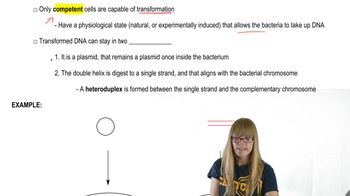Here are the essential concepts you must grasp in order to answer the question correctly.
Protein Structure
Protein structure refers to the specific three-dimensional arrangement of amino acids in a protein, which is categorized into four levels: primary, secondary, tertiary, and quaternary. Each level of structure contributes to the overall shape and stability of the protein, which is crucial for its function. For example, the folding of a protein into its functional shape allows it to interact with other molecules effectively.
Recommended video:
Structure-Function Relationship
The structure-function relationship in proteins posits that the specific shape and arrangement of a protein's structure directly influence its biological activity. This means that even slight changes in structure can lead to significant alterations in function, as seen in enzymes where the active site must match the substrate for catalysis to occur. Understanding this relationship is key to grasping how proteins perform their roles in biological systems.
Recommended video:
Experimental Evidence
Experimental evidence supporting the link between protein structure and function includes techniques such as X-ray crystallography and nuclear magnetic resonance (NMR) spectroscopy, which allow scientists to visualize protein structures. Additionally, mutational analysis can demonstrate how specific changes in amino acid sequences affect protein function, providing insights into the mechanisms by which proteins operate. This body of evidence reinforces the concept that structure is fundamental to function in biological molecules.
Recommended video:




